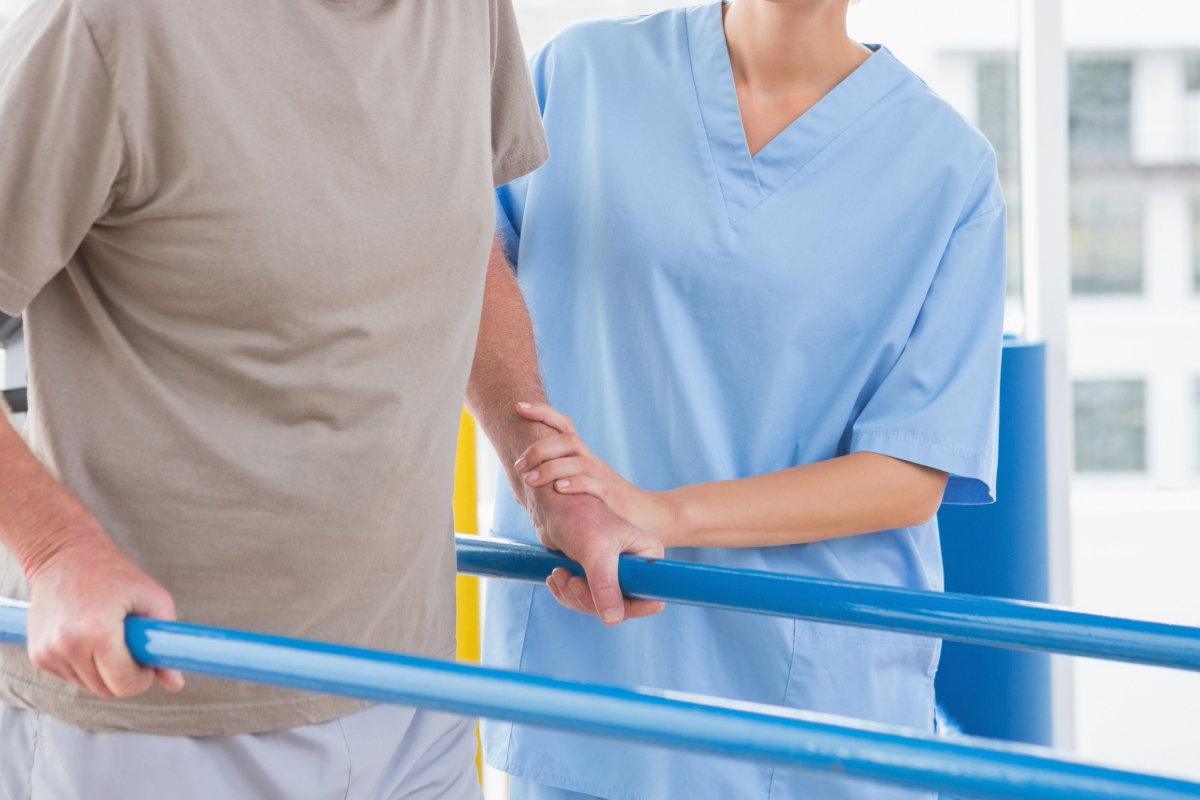
Growing older is always something we’re trying to prolong. Like trying to prevent summer from turning to fall and heading to winter, we helplessly look for ways to prolong the inevitable. From simple things like taking daily vitamins and exercising to taking it to the extreme with surgery, many of us look to science and medicine to not only help prolong aging but maybe ease us into it. As we desperately try to prolong nature, we may want to step back and reexamine exactly from where this desperation stems. Of course, aging does bring with it inconveniences, life changes, and disadvantages – not to mention the onset of medical problems. However, many people find themselves eager to stop aging based on common myths and stereotypes about growing old.
Let’s dispel some of these aging myths right now that might be leading you to desperately search for the fountain of youth.
1. Falling Is Normal
No, falling when you’re in the twilight years is not and should not be a part of normal living. Yes, there are disadvantages of growing old that can increase your risk of falling. According to the National Council on Aging, one in four Americans over the age of 65 falls each year. However, this doesn’t mean that falling is inevitable as you age. There are evidence-based prevention programs that help reduce your risk of falling significantly. Such programs are often based on physical and exercise therapy. Therapy that focuses on balance, mobility, and strength, along with lifestyle changes can prevent falls among seniors. A recent study found that physical therapy is extremely effective in not only reducing the risk of falling but also limiting the severity of the fall if and when it does happen.
However, it’s important to remember that although you can take steps to prevent falling, you’re still at risk as you grow older. The idea that “it won’t happen to me” is a dangerous mindset that can lead to taking risks increasing your chance of falling. On the one hand, you shouldn’t be living in so much fear that you don’t get out of bed. On the other hand, you need to recognize your limits based on your condition and stage in life and adjust your lifestyle and mindset accordingly.
2. My Strength And Mobility Won’t Be Improved/Regained
It’s a fact that we do lose muscle, strength, flexibility, and mobility as we age. However, this doesn’t mean that as you grow older you won’t ever be able to improve or regain these things. Many people believe that when they hit a certain age they’re too old to start an exercise program. However, this couldn’t be further from the truth. Researchers found that resistance strength training exercises were extremely effective in helping adults 60+ not only regain strength but also improve it.
Many of the conditions we associate with aging, such as osteoporosis, can be limited and even prevented with an exercise-based program. If you have osteoporosis currently, exercise can keep you physically active and living the life you want. Resistance exercises are especially effective in improving bone strength and reducing bone loss due to osteoporosis.
You might think that growing old means growing frail, but the right exercise program under the right guidance can prevent and limit that frailty.
3. Chronic Pain Is A Part Of My Life Now
Most people believe that once they have chronic pain it’s just a part of their normal life. However, as obvious as it sounds it bears repeating: pain is the body’s way of saying there is something not right that needs fixing. Pain management may include such normal treatments as opioids and even surgery, but there are other ways of not only managing pain but beating it back.
Recent research suggests that physical activity is linked to decreased chronic pain. The CDC recommends exercise and physical therapy in particular as a better and more effective way to manage pain as opposed to opioids. The problem with using opioids to help manage pain is that they often just mask the pain instead of treating it. Physical therapists, on the other hand, work closely with the patient to treat the source of the pain. Furthermore, through therapy, exercise movement reduces pain by increasing circulation and blood flow.
4. I Can Expect Surgery
It’s certainly true that some conditions do end up in surgery. Depending on how advanced the condition is and the prognosis, this is one thing that may be a possibility for many people. However, to say that it’s inevitable that you’ll have to undergo surgery to fix common aging problems is an exaggeration. Physical therapy is a proven method of reducing the need for surgery for many ailments, including carpel tunnel, arthritis, knee pain, back pain, and more. It may be even more effective than surgery in many cases, as oftentimes a secondary surgery is needed later on.
Physical therapy reduces the need for surgery by strengthening the right muscles that support the weakest areas of the body for individuals. Instead of replacing the joints, physical therapy works to strengthen the supporting muscles of the problem area. This takes stress and pressure off the joint, which helps in the full recovery from pain and inflammation.
Furthermore, physical therapy through the use of exercise can help reduce the risk of conditions such as arthritis that oftentimes end in surgery. Researchers recently found that older women who routinely exercise had more cartilage in their knees, which makes them less likely to develop such conditions.
5. I Won’t Be Able To Make It To The Bathroom
Urinary incontinence is certainly a problem many people fear about growing old. This is a particular problem among women, especially those who have given birth. Many people fear the need of having to wear special undergarments or take medication due to this condition. Other people limit their time away or don’t venture far from a bathroom. This makes it difficult to live life normally and independently. This problem may be common and plagues many elderly. However, it doesn’t have to be inevitable and can even be fixed.
Physical therapy has been proven to help many people who suffer from this condition. A physical therapist works with the patient to strengthen the muscles that support the bladder. This helps you regain control and minimize the effects of the symptoms.
Physical Activity Helps You Age Well
You may think that exercise and physical activity are going to dramatically decrease as you get older. However, you couldn’t be more wrong. Granted, it’s important to recognize your limitations at every stage of your life. However, exercise is just as important in your twilight years as it is in your younger years. It’s been proven to reduce the effects of aging greatly. Furthermore, it can limit many of the risks associated with growing old.
Physical activity as you age is so important in fact that the American College of Sports Medicine called it an “effective intervention..of functional declines associated with aging,” saying:
Participation in regular physical activity (both aerobic and strength exercises) elicits a number of favorable responses that contribute to healthy aging…Participation in a regular exercise program is an effective intervention/modality to reduce/prevent a number of functional declines associated with aging.
According to the sports medicine college, older individuals are just as “trainable” as when they were young. They still have the “ability to adapt and respond to both endurance and strength training”. Both forms of exercise are linked to healthy aging. For example, endurance training is linked to a reduction in risk factors associated with cardiovascular disease and diabetes. It’s also linked to increasing life expectancy. “Strength training,” says the ACSM, “helps offset the loss in muscle mass and strength typically associated with normal aging.”
The Benefits Of Physical Therapy And Exercise
In general, says the ACSM, exercise and physical therapy can improve overall health with the following benefits:
- Improved bone health, reducing the risk for osteoporosis;
- Improved posture and stability, reducing the risk of falling;
- Increased flexibility, mobility, range of motion, and overall independence.
So, if you think age is going to sideline you for the rest of your life, think again. These myths shouldn’t be keeping you from enjoying life as you grow older. When there are ways such as exercise and physical therapy there’s no reason to fear age.
